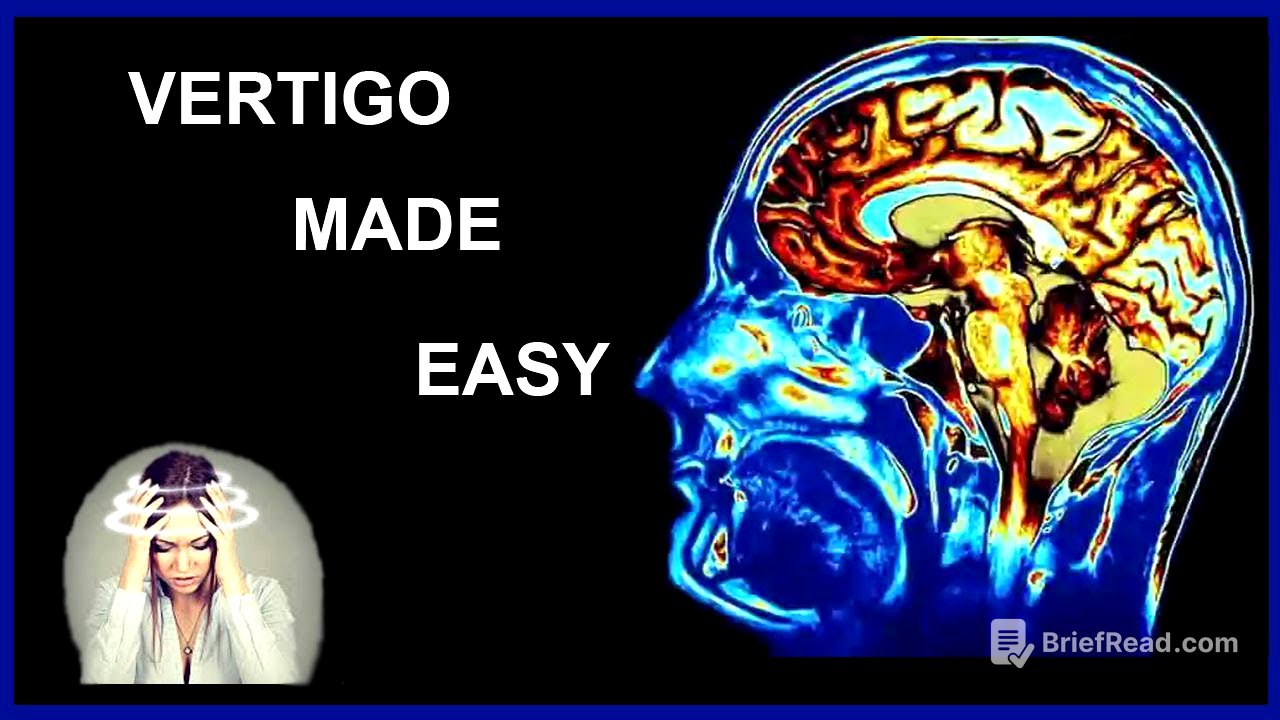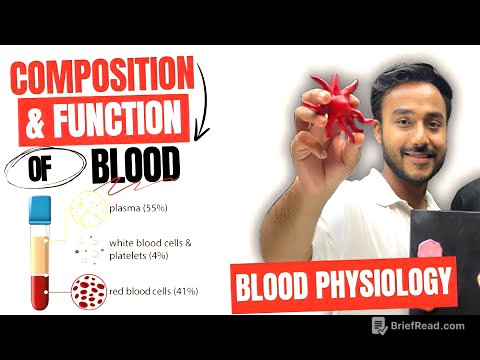TLDR;
This video by Dr. Srinivas Medical Concepts provides a comprehensive overview of vertigo, differentiating between peripheral and central causes, diagnostic methods, and various treatment approaches. Key points include the importance of identifying central vertigo due to its life-threatening nature, using nystagmus and the head impulse test for diagnosis, understanding the Dix-Hallpike maneuver for BPPV, and tailoring treatment to the specific cause of vertigo. The video emphasizes that vestibular suppressants should only be used for a short period to avoid hindering central compensation.
- Differentiating between peripheral and central vertigo is crucial due to the life-threatening nature of central vertigo.
- Nystagmus and the head impulse test are key diagnostic tools.
- Treatment varies depending on the specific cause of vertigo.
- Vestibular suppressants should be used sparingly to avoid hindering central compensation.
Introduction to Vertigo [0:09]
Dr. Srinivas introduces the topic of vertigo, defining it as an illusion of self or environment, a sense of spinning. It's important to differentiate true vertigo from nonspecific symptoms like dizziness or imbalance. The initial approach involves determining whether the vertigo is peripheral or central in origin.
Peripheral vs. Central Vertigo [1:22]
Peripheral vertigo typically involves the vestibular nerve, and unilateral involvement causes vertigo due to asymmetric input to the brain, while bilateral damage may lead to oscillopsia or imbalance without significant vertigo. Central vertigo, stemming from brainstem or cerebellar issues, is more dangerous and potentially life-threatening. Differentiating between central and peripheral vertigo is crucial, with nystagmus being a key indicator.
Nystagmus as a Diagnostic Tool [3:31]
Nystagmus characteristics can help distinguish between peripheral and central vertigo. Peripheral vertigo presents with unidirectional nystagmus, with the fast phase away from the affected side, and mixed vertical-torsional movement. Central vertigo may show bi-directional nystagmus, changing with gaze, and purely vertical or torsional movements. Visual fixation inhibits nystagmus in peripheral causes but not in central causes.
Head Impulse Test (VOR) [6:06]
The head impulse test assesses the vestibulo-ocular reflex (VOR). In peripheral vertigo, impaired VOR results in a "catch-up saccade" when the head is turned rapidly. This test is positive in peripheral vertigo and typically negative in central vertigo.
Additional Diagnostic Points [8:48]
Other factors aid in differentiation. Unilateral hearing loss suggests peripheral vertigo, while central vertigo may present with diplopia, dysarthria, or ataxia. The Dix-Hallpike maneuver can provoke nystagmus in benign paroxysmal positional vertigo (BPPV). Dynamic visual acuity, where vision worsens with head movement, indicates peripheral vertigo. Investigations like audiometry and MRI can further clarify the diagnosis.
Dix-Hallpike Maneuver and Dynamic Visual Acuity [10:13]
The Dix-Hallpike maneuver involves specific head movements to provoke nystagmus in BPPV, aiding diagnosis. Dynamic visual acuity assesses the impact of head movement on visual clarity, with decreased acuity indicating vestibular dysfunction.
Diagnostic Investigations [12:36]
Audiometry can reveal unilateral or low-frequency hearing loss, as seen in Meniere's disease. MRI of the brain and internal auditory canal helps identify lesions or tumors causing central vertigo.
Differential Diagnosis of Vertigo [14:05]
Differential diagnoses include vestibular neuronitis, often viral and treated with glucocorticoids; vestibular migraine, managed with migraine prophylaxis; Meniere's disease, characterized by low-frequency hearing loss and treated with diuretics and low salt intake; and vestibular schwannoma, diagnosed via MRI.
Benign Paroxysmal Positional Vertigo (BPPV) [16:48]
BPPV is characterized by brief episodes of vertigo triggered by head movements. It results from otoconia (calcium carbonate crystals) dislodged from the utricle into the semicircular canals. Diagnosis involves the Dix-Hallpike maneuver, and treatment consists of the Epley maneuver to reposition the otoconia.
Bilateral Vestibular Hypofunction [20:18]
Bilateral vestibular hypofunction, often caused by ototoxic drugs, leads to imbalance and oscillopsia. The head impulse test is positive bilaterally. Treatment involves vestibular rehabilitation.
Central Vestibular Disorders [21:08]
Central vestibular disorders involve the brainstem and cerebellum and can be life-threatening. Examples include Wallenberg syndrome and cerebellar hemorrhage. Treatment depends on the specific condition.
Psychosomatic and Functional Dizziness [21:50]
Psychosomatic dizziness, or persistent postural-perceptual dizziness (PPPD), is associated with anxiety and autonomic symptoms. Neurological and vestibular tests are typically normal. Treatment includes anti-anxiety and antidepressant medications.
Treatment Approaches for Vertigo [22:31]
Treatment varies based on the cause of vertigo. Vestibular suppressants should be limited to 3-5 days to avoid hindering central compensation. Options include antihistamines, benzodiazepines, anticholinergics, physical therapy (Epley maneuver), diuretics for Meniere's disease, migraine prophylaxis, corticosteroids for vestibular neuronitis, and SSRIs for psychogenic vertigo.
Key Takeaways [24:25]
The video concludes by reiterating the importance of differentiating between central and peripheral vertigo, limiting vestibular suppressants to a short duration, and tailoring treatment to the specific cause of vertigo.









